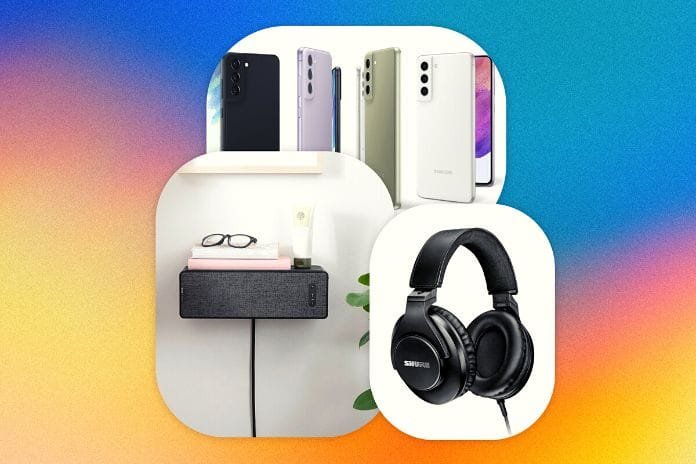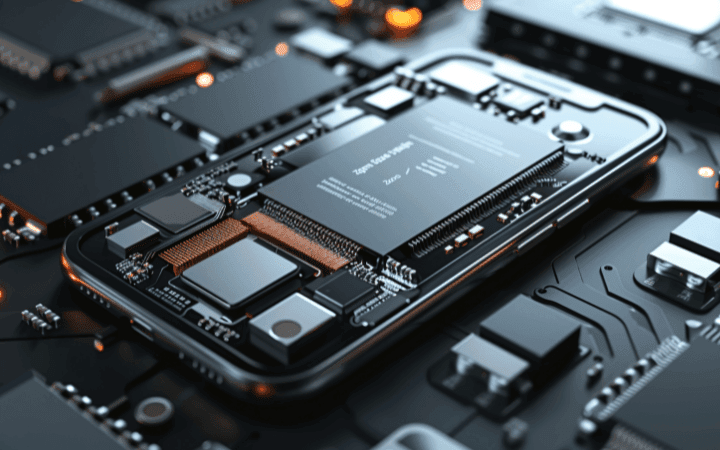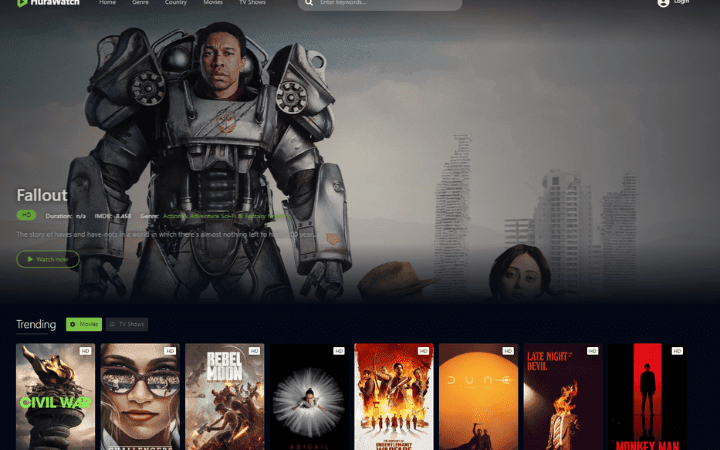The 12 Anticipated Technology Products Of 2022

From certainties to distant mirages: they are gadgets, software, tools to play, and vehicles that are already generating a lot of chatter on the web. Barring various global lockdowns that have already halted the world in recent years, 2022 could be a year full of new technology products and even entirely new technology categories. Next year’s proposals could shift how we see technology’s role in personal and business life, from games to electric vehicles to augmented reality wearables.
Tecnomanie has thus collected the essential news and revealed it in advance. We anticipate that it will be a nice mix! Some products have already been announced and, barring “disasters,” will be available next year. Others are still rumored but have a reasonable chance of hitting the market. Others, on the other hand, are distant mirages, but some could be presented for real.
The Certainties: Apple Universal Control
Universal Control is not a natural product but could, given the high expectation among Apple faithful. At the WWDC conference in June 2021, the company announced that upcoming versions of its iOS and macOS operating systems would allow users to control a Mac and iPad from a keyboard, mouse, or touchpad. For example, you could use a Mac keyboard to type text on the iPad screen or the mouse to drag content from the iPad to the Mac. Apple originally announced the new feature alongside iOS 15 and macOS Monterey, and it would be coming ” in autumn.” Apple updated its website to say the universal control feature is coming next spring.
Apple iPhone 14
As usual, Apple says nothing about next year’s iPhones. But if we look at the tradition, we are sure it will launch a new line of iPhones called the iPhone 14 in the fall of 2022. MacRumors believes the series will consist of a 6.1-inch iPhone 14, a 6.1-inch iPhone 14 Pro, a 6.7-inch iPhone 14 Max, and a 6.7-inch iPhone 14 Pro Max. The iPhone 13’s hallmarks (mainly the flat metal edges) will likely remain. But some reports claim that the new phones will have a smaller “notch” (for cameras and sensors) on the front; others claim that the notch will disappear altogether.
Some also believe that camera lenses will no longer protrude from the back surface of phones but will be flush. The 120Hz (120 times per second) screen refresh rate supported in this year’s iPhone 13 Pro and Pro Max models are said to be added to a lower-priced, non-Pro iPhone 14 model next year. All iPhone 14 models will likely get processor speed increases and camera upgrades (one report says Pro models will have a 48-megapixel camera). It is not a given that there will be an iPhone 14 Mini to follow this year’s iPhone 13 Mini; Sales were reportedly low for the 5.4-inch shielded device.
Valve Steam Deck
Valve and AMD said in July that they have teamed up to build a new portable gaming computer called the Steam Deck. The device looks like the Nintendo Switch, but it will be the first PC-compatible handheld console and can play the entire Steam library of Windows PC games. After Steam Deck was officially announced last July, orders for the device on the Steam website arrived so fast and aggressively that it sent servers into crisis. Then, in November, Valve informed everyone who had placed the order that delivery would be postponed to 2022 due to a chip supply shortage.
Panic Playdate
Panic’s new Playdate portable gaming device should finally see the light of day in early 2022 after the company delayed its launch twice already. The Playdate, initially announced in 2019, has a 1-bit black and white display, and the central control is a four-way directional pad. It was designed in collaboration with the eclectic Swedish consumer electronics company and design house Teenage Engineering, which may be the reason for its most intriguing feature: a crank on the side of the device used for game control.
Rivian R1T and R1S
Rivian Automotive recently held an IPO that brought in nearly $ 12 billion at a $ 65 billion valuation, more than some of the world’s most famous automakers. The company is working to deliver a fleet of local delivery vans to Amazon, which owns 20% of Rivian. But its main products are an electric pickup and an electric SUV. The company is now starting production of the truck, the R1T, which it plans to begin shipping in higher volumes in 2022 at a starting price of $ 67,500. The SUV, the R1S, will start at $ 70,000.
Magic Leap 2
Magic Leap says it will launch its Magic Leap 2 augmented reality headset next year. It will be more modest and lighter than its ancestor, the Enchanted Jump 1, and will have a quicker processor and better battery duration. It also has a decidedly leaner and less steampunk design language. Notably, the display’s field of view (where digital images mix with real-world ideas) is significantly higher. The company has focused on selling its AR eyewear to businesses, particularly the healthcare, manufacturing, and defense sectors, where they will be used in various areas, from worker training to remote surgery.
Meta Quest 3
Meta (initially Facebook) said in its big October metaverse presentation that it was working on a new virtual reality device meant to introduce people to metaverse-like experiences. The code name for that device is Project Cambria. This left some people wondering about the fate of the new headset that will take the place of Meta’s already popular Oculus Quest 2, the Quest 3 (The company is phasing out the Oculus name.) Meta CEO Mark Zuckerberg confirmed his company is still working on the device but hasn’t provided an exact launch date. If they meet the current release cadence of the products, they will likely arrive in 2022. The Quest 3 will feature a more powerful processor, (perhaps) a better battery,
Lives Hopes: Google Pixel Watch
Google’s primary role in smartwatches has been to provide the operating system that powers many of them: Wear OS, which merged with Samsung’s Tizen operating system. But the company’s purchase of fitness wearables maker Fitbit in 2019 has suggested to some that Google may soon launch its smartwatch in the same way it developed its Pixel smartphones. The smartwatch is also expected to use the Pixel branding. Google hasn’t confirmed any of this, but rumors about the product are rising.
Apple AR Glasses
Apple has long been rumored to work on a pair of augmented reality glasses. The launch date has been a mystery for a long time. The device will be powered by a team of Apple homegrown chips: one for the OLED displays built into the lenses and another less powerful one for processing the information gathered by the cameras and sensors on the device. Apple is looking into the device as the eventual replacement of the iPhone as people’s primary personal computing device. Forgive us if we are skeptical that they will introduce them in 2022. We’ll see.
Far Mirages: Microsoft Surface Neo
In October 2019, Microsoft said it would launch a dual-screen tablet called the Surface Neo. It was supposed to run Windows 10X, but Microsoft stopped developing the operating system. It would have been powered by an Intel Lakefield processor, which Intel then discontinued amidst all its problems. Now the Neo has been pushed back to 2022. Microsoft recently launched the first and second generation of its first dual-screen phone/tablet, the Surface Duo, but the devices reportedly haven’t sold many. So Neo may never see the light of day.
Chevy Silverado E
The truck features a fixed glass roof, creating an aquarium-like effect in the cockpit with a full view of the outside world. The absence of a combustion engine frees up a lot of space for the front and rear seat passengers. The vehicle, which can steer on all four wheels, can travel 400 miles on a single charge using GM’s Ultrium modular battery system. Production of the new electric vehicle is not expected to start before 2023.
Google AR Glasses
Google began playing with expanded reality quite some time ago with Task Tango. In 2018, it launched its AR Cor Augmented Reality Development Kit. And, of course, in the 2010s, it gained notoriety with its pioneering but scorned Google Glass smart glasses. But the company never admitted to working on their pair of authentic AR glasses. Now, new job postings strongly suggest that it is. One of the job advertisements states, “Our team is building the software components that control and manage the hardware on our augmented reality (AR) products.” The reports don’t suggest when Google could finally launch its AR glasses (if they exist) on the market. There is a slight chance he will be able to do it next year.
Also Read: Digital Economy: How Technology Is Accelerating Business






